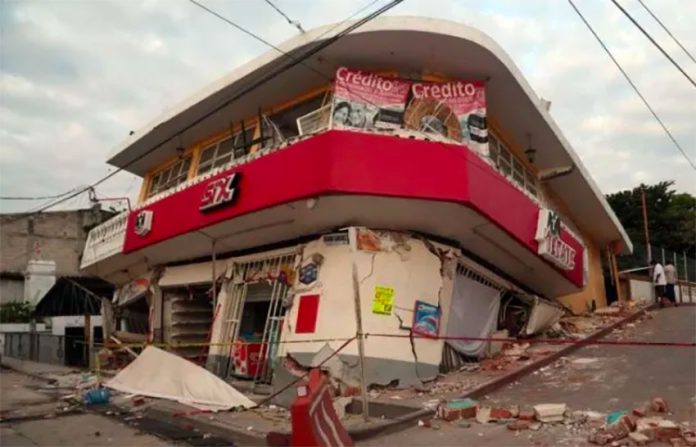Earthquake victims in parts of Morelos say they are still living a nightmare, three years after their homes were demolished.
Red tape and corruption associated with government-run relief programs in the years since the September 19, 2017 quake mean that some residents are still homeless, navigating the coronavirus pandemic as they hold out hope that federal funds will arrive.
The most recent report on reconstruction efforts in Morelos, in November 2019, noted a delay in rebuilding about 8,000 homes, 89 historic buildings and 10 schools.
According to an initial census, 23,793 houses were affected in Morelos, of which 7,410 were a total loss and 16,383 were partially damaged. That number was later updated to 31,090 properties, of which 15,586 were owned by people below the poverty threshold and thus eligible for government subsidies.
However, irregularities plague programs providing aid to quake victims.
Governor Cuauhtémoc Blanco accused his predecessor, Graco Ramírez, of diverting 70 million pesos (US $3.31 million) in resources from a state disaster relief program that was to rebuild in areas damaged by the earthquake, especially in the municipalities of Jojutla, Tlaquiltenango, Yautepec, Jonacatepec, Tepalcingo, Tlayacapan, Cuautla and Cuernavaca.
Jojutla was particularly hard hit; 27 residents died and more than 3,000 houses were damaged.
In the Emiliano Zapato neighborhood, several complaints against National Housing Program (Conavi) workers, who were tasked with assessing the damage and following up with families, arose after the government workers simply abandoned the people they were charged with helping.
Oralia Vargas Cedillo’s home sustained damage but Conavi technicians did not do a proper assessment and misplaced her documents, she says.
Last year she finally received 29,000 pesos (US $1,372) out of 32,000. The remaining 3,000 pesos went to a Conavi worker for supervising the rebuild.
The worker never came, Vargas says, and she wasn’t able to finish work on her home with the government money. The structure she lives in is unsound; the walls are cracking and the house shakes when trucks pass by.
On the sidewalk at the corner of Francisco I Madero and November 20 streets stands a large tent structure cobbled together with pieces of plastic, wood, metal and cardboard.
This is where a woman named Martha has lived for the past three years since her home was destroyed.
Neighbors mock her and show her disdain, she says. They take photos of her makeshift home and post them to social media to make fun of her.
She and her husband have both lost their jobs due to the coronavirus pandemic. Their 13-year-old son is staying with relatives in order to have access to a computer, so he can keep up with school work.
She was left with nothing because her home was built on family land, and she had no proof of ownership that is required to receive government disaster funds.
“I have taken papers to the state government and Cuauhtémoc Blanco, and to the federal government, and they have not even given me an answer,” Martha says. “They have just ignored me.”
Griselda Contreras Hernández, president of the states Citizens Commission for Victims (CCV), says there are others who share Martha’s plight. “Many chose to go rent [in other municipalities], others live with a relative and some remain on the streets or on land in makeshift homes built with tents or sheetmetal.”
Contreras estimates that 35% to 40% of the damaged homes across the state have been rebuilt, “mainly due to the support of foundations because the authorities simply do not respond.”
Of the non-governmental organizations that have stepped in to help, the Carlos Slim Foundation has delivered 94 homes, Banorte 15 and Proyecto Esperanza has 50 under construction.
Of government-run programs, Hogares-Infonavit is also about to start construction on 50 homes, while the Échale a tu Casa program plans to build 90 new homes.
Ana Jiménez, former president of the CCV, remembers President López Obrador’s promise on December 11, 2018, when he visited Jojutla and told residents that he would return dignity and hope to those who had lost everything.
That has not happened, she says, because the current administration is using faulty data collected by federal programs during the last administration.
Problems are not being resolved, but rather compounded, and families without title to the land they once lived on continue to fall through the cracks.
Source: El Universal (sp), La Silla Rota (sp)
